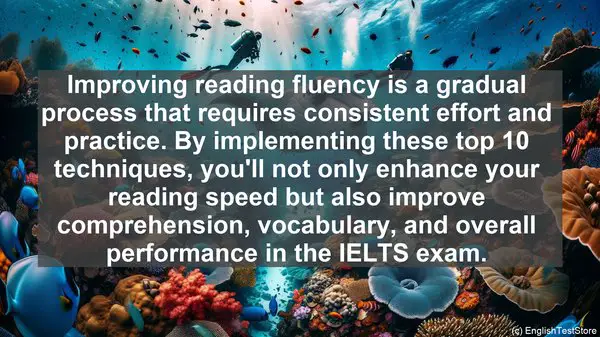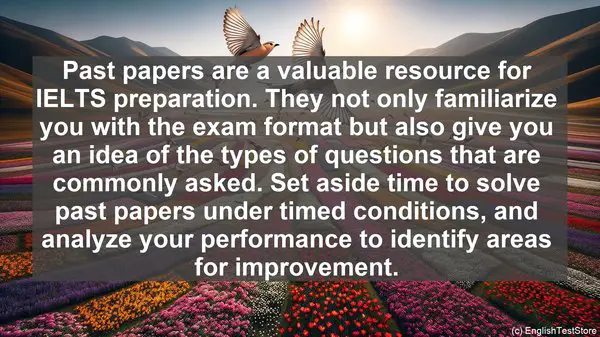Introduction: The Importance of Reading Fluency in the IELTS Exam
Welcome to today’s lesson, where we’ll be discussing the top 10 techniques for improving reading fluency for the IELTS exam. As you may know, the reading section in the IELTS exam is not just about understanding the text, but also about doing so quickly and accurately. This is where reading fluency comes into play. It’s not only about reading fast, but also about comprehending the information effectively. So, let’s dive into the strategies that can help you enhance your reading fluency for the IELTS exam.

1. Skimming and Scanning
One of the most effective techniques for improving reading fluency is skimming and scanning. Skimming involves quickly going through the text to get a general idea of the content, while scanning is about looking for specific information. By mastering these techniques, you can save time and focus on the relevant details, which is crucial in a time-limited exam like the IELTS.
2. Building Vocabulary
A strong vocabulary is a key asset in the IELTS reading section. The more words you know, the better you’ll understand the text. Make it a habit to learn new words every day, and try to use them in your daily conversations or writing. This will not only improve your reading fluency but also enhance your overall language skills.

3. Regular Reading Practice
Reading regularly is essential for developing reading fluency. Choose a variety of texts, such as newspaper articles, academic journals, or even novels, and set aside dedicated time for reading every day. This will not only expose you to different writing styles but also help you become familiar with various topics that often appear in the IELTS exam.
4. Time Management
Time management is crucial in the IELTS reading section. Since the exam is time-limited, it’s essential to allocate your time wisely. Practice solving reading passages within the given time frame, and try to improve your speed without compromising comprehension. This can be achieved through consistent practice and using techniques like skimming and scanning.
5. Active Reading
Reading actively means being fully engaged with the text. Instead of just passively going through the words, try to interact with the content. This can be done by asking yourself questions, summarizing the main points, or making connections with your prior knowledge. Active reading not only improves comprehension but also enhances retention.
6. Understanding Text Structure
Texts in the IELTS reading section often follow a specific structure, such as cause and effect, problem and solution, or compare and contrast. By understanding these structures, you can quickly grasp the main ideas and the relationships between different parts of the text. This, in turn, improves both speed and comprehension.
7. Practicing with Past Papers
Past papers are a valuable resource for IELTS preparation. They not only familiarize you with the exam format but also give you an idea of the types of questions that are commonly asked. Set aside time to solve past papers under timed conditions, and analyze your performance to identify areas for improvement.
8. Using Context Clues
In the IELTS reading section, you may come across unfamiliar words. Instead of getting stuck on them, use context clues to understand their meaning. Look for surrounding words or phrases that can give you a hint about the word’s definition. This strategy not only saves time but also improves overall comprehension.
9. Summarizing
After reading a passage, practice summarizing its main points in your own words. This not only helps in reinforcing your understanding but also improves your ability to extract essential information. Summarizing is a skill that can be honed through regular practice and is highly beneficial in the IELTS exam.
10. Seeking Feedback
Lastly, don’t hesitate to seek feedback on your reading. It could be from a teacher, a study partner, or even online forums. Constructive feedback can help you identify your strengths and weaknesses, allowing you to focus on areas that need improvement. Additionally, it provides valuable insights into your overall progress.
